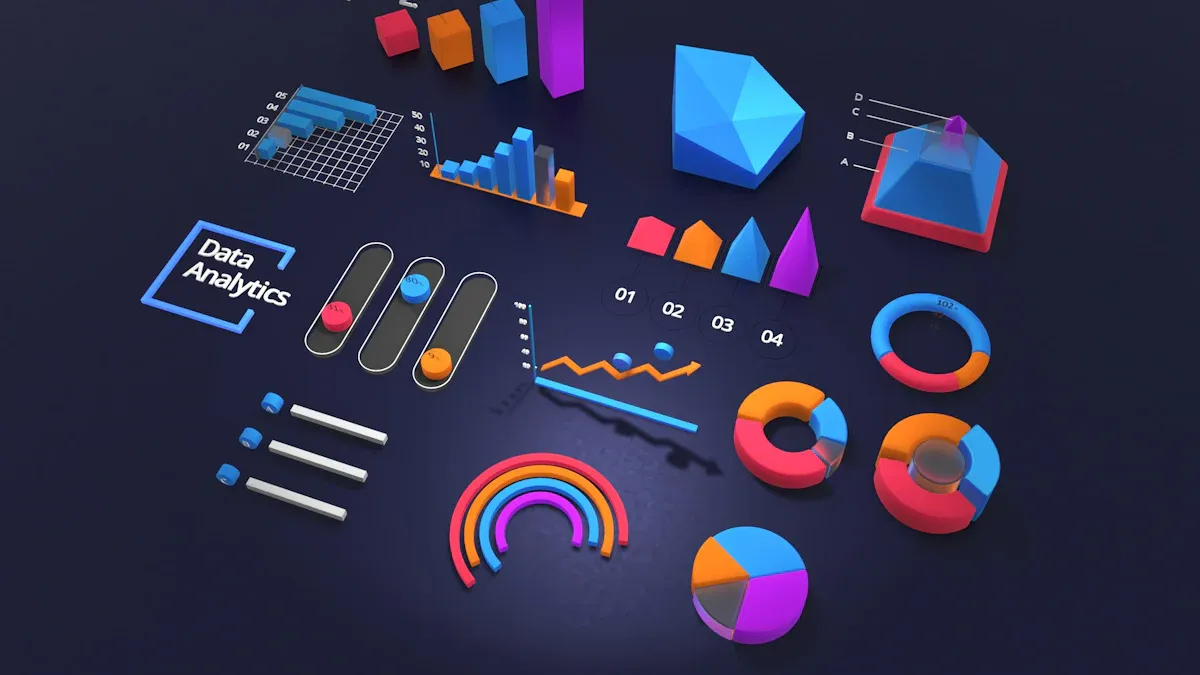First Contact Resolution Metrics and Their Role in 2025

In 2025, first contact resolution in customer service has become one of the most important metrics. It ensures that customer issues are resolved during the first interaction, leading to faster and more efficient support. Higher first contact resolution rates improve the customer experience by reducing frustration and saving time. For businesses, this metric drives operational efficiency by lowering the number of agents required to handle repeated tickets.
Studies reveal a strong link between first contact resolution customer service and business success. For every one percent increase in resolution rates, customer satisfaction scores rise by the same margin. Companies that resolve issues quickly are 2.4 times more likely to retain customers and 10 times more likely to gain referrals. Moreover, 80 percent of customers who switched to competitors stated they would have stayed if their problems had been solved during the first contact. Tools like Sobot exemplify how modern solutions can streamline first contact resolution and enhance customer loyalty.
Understanding First Contact Resolution in Customer Service

What is First Contact Resolution?
First contact resolution (FCR) refers to resolving a customer’s issue during their first interaction with your support team, without requiring follow-ups or additional contacts. It is a key performance indicator in customer service, reflecting how effectively your team addresses concerns in real time. For example, if a customer calls about a billing error and the agent resolves it immediately, that counts as a successful FCR.
According to industry research, FCR is defined as the percentage of interactions where customers do not need to reach out again for the same issue. The table below highlights insights from leading studies:
| Evidence Description | Source |
|---|---|
| FCR is defined as the percentage of callers that do not require further contacts to address their issue. | The mediating effects of first call resolution on call centers’ performance |
| FCR should be defined from the customer perspective to avoid incorrect estimates. | The mediating effects of first call resolution on call centers’ performance |
| High FCR rates correlate with high customer satisfaction scores, indicating its importance in customer service. | First Call Resolution (FCR): A Comprehensive Guide |
By focusing on FCR, you can improve customer satisfaction and streamline your operations. Tools like Sobot, which offer AI-powered solutions, help businesses achieve higher FCR rates by providing agents with real-time insights and efficient workflows.
Key elements of FCR in modern customer service
Achieving high FCR rates requires a combination of effective strategies and tools. Here are the key components that define FCR in today’s customer service landscape:
- Agent Empowerment: Well-trained agents equipped with the right resources can resolve issues faster. Scenario-based training and peer coaching programs are excellent ways to prepare your team for real-world challenges.
- Technology Integration: Investing in AI-powered tools, such as Sobot’s unified communication platforms, enables agents to access customer data instantly. This reduces resolution times and enhances the customer experience.
- Customer-Centric Approach: Measuring FCR from the customer’s perspective ensures accurate results. For instance, if a customer feels their issue is unresolved, it should not count as a successful FCR, even if the agent believes otherwise.
The following table outlines different methods for calculating FCR and their applications:
| Calculation Method | Formula | Best For | Limitations |
|---|---|---|---|
| Transaction-Based | (Number of transactions resolved on first contact / Total number of transactions) x 100 | Businesses with simple, single-interaction resolutions | Doesn't account for complex issues requiring multiple touchpoints |
| Customer-Based | (Number of customers whose issues were resolved on first contact / Total number of customers with support requests) x 100 | Businesses wanting to understand the overall customer experience | More complex to track than transaction-based FCR |
| Issue-Based | (Number of specific issues resolved on first contact / Total number of that specific issue) x 100 | Businesses focusing on improving resolution rates for specific problem areas | Requires detailed categorization and tracking of issue types |
By addressing these elements, you can create a robust framework for improving FCR in your organization.
Why FCR is a critical metric for customer satisfaction
FCR plays a pivotal role in shaping the customer experience. When customers have their issues resolved during the first interaction, they feel valued and respected. This reduces frustration and builds trust in your brand. Studies show that for every 1% improvement in FCR, customer satisfaction increases by the same margin. Additionally, high FCR rates lead to reduced operational costs, as fewer follow-ups are required.
Consider these statistics that illustrate the benefits of FCR:
| Statistic Description | Value |
|---|---|
| Improvement in first-contact resolution rates with AI | 90% |
| Reduction in service costs due to FCR | Up to 25% |
| Increase in retention boosting profits | 25%-95% for 5% increase |
| Increase in customer satisfaction scores with feedback | 10%-15% |
FCR is often described as the "home run" of customer service metrics because it impacts nearly every significant performance indicator. By focusing on this metric, you can enhance customer loyalty, improve operational efficiency, and strengthen your brand reputation. Tools like Sobot make it easier to achieve these goals by offering advanced features tailored to modern customer service needs.
The Importance of First Contact Resolution Metrics
Enhancing customer satisfaction and loyalty
First contact resolution plays a vital role in improving customer satisfaction and fostering loyalty. When you resolve a customer’s issue during their first interaction, it creates a positive experience. Customers feel valued and respected, which strengthens their trust in your brand. Research shows that 28% of customers consider resolving their issue in a single interaction the most important aspect of good customer service. Additionally, 90% of dissatisfaction cases stem from failing to achieve first contact resolution.
High first contact resolution rates directly impact customer satisfaction scores. For every 1% improvement in the FCR rate, customer satisfaction increases by the same margin. This correlation highlights why customer service leaders prioritize this metric. By focusing on first contact resolution customer service, you can reduce frustration and build long-term relationships with your customers.
Reducing operational costs through efficient issue resolution
Improving your FCR rate doesn’t just benefit customers—it also reduces operational costs. When you resolve issues on the first attempt, you eliminate the need for repeat contacts. This efficiency lowers the workload for your support team and reduces the resources required to handle inquiries.
Automation plays a key role in achieving this. AI-powered customer service bots handle routine inquiries, allowing human agents to focus on complex issues. This approach speeds up resolution times and enhances customer service effectiveness. Advanced call center management software also prevents customers from repeating themselves by summarizing previous interactions. Real-time prompts help agents provide relevant support, reducing the likelihood of repeat calls. These improvements not only enhance customer satisfaction but also lower overall service costs.
Strengthening brand reputation and competitive positioning
Your FCR rate significantly impacts your brand reputation and competitive edge. Customers associate quick and effective issue resolution with reliability and professionalism. High FCR rates demonstrate your commitment to delivering exceptional customer service, which strengthens your brand image.
Industry benchmarks reveal that improving first call resolution leads to measurable benefits. For example:
| Metric | Impact |
|---|---|
| Cross-selling acceptance | Increases by 20% when FCR is improved |
| Operational cost reduction | 1% reduction for each percentage improvement in FCR |
| Customer Satisfaction (Csat) | 1% improvement for every 1% increase in FCR |
| Csat drop | 15% drop for each repeat contact required |
These metrics highlight how first contact resolution customer service can differentiate your brand in a competitive market. By focusing on this customer service metric, you not only improve customer satisfaction scores but also position your business as a leader in customer experience.
Measuring First Contact Resolution Effectively
Standard formulas for calculating FCR
To measure first contact resolution accurately, you need a reliable formula. The most widely used method calculates FCR as:
(Number of issues resolved on first contact / Total number of issues) x 100.
For example, if your team resolves 120 out of 200 customer queries during the first interaction, your FCR rate would be 60%. This formula provides a clear picture of your team's efficiency. However, alternative methods exist. Some businesses calculate FCR by focusing solely on first calls, using the formula:
(Number of issues resolved on first calls / Total number of first calls received) x 100.
While this approach works for call centers, it may misrepresent FCR if you use multiple communication channels. To ensure accuracy, consider combining this formula with other metrics like unresolved ticket rates or average resolution time. These additional measurements help identify gaps in your support strategy and improve overall performance.
Industry benchmarks and performance standards
Understanding industry benchmarks helps you evaluate your FCR rate against competitors. Research shows that a good FCR rate falls between 65% and 75%, while exceptional performance reaches 90%. According to industry reports, the average FCR benchmark is 77%.
| Metric | Industry Standard | Measurement Methods |
|---|---|---|
| First Contact Resolution (FCR) | 77 percent | Analytics initiatives, post-contact surveys, tracking repeat contacts. Discrepancies in measurement methods exist. |
Achieving or exceeding these benchmarks positions your business as a leader in customer service metrics. It also boosts customer satisfaction and strengthens your brand reputation.
Overcoming challenges in FCR measurement
Measuring FCR accurately can be challenging. Common methods like agent assessments or tracking repeat calls often introduce bias or inaccuracies. To overcome these issues, focus on customer-centric approaches. For instance, sending a post-interaction summary allows customers to reopen unresolved cases. This method ensures your FCR rate reflects the true customer experience.
Additionally, integrating tools that track unresolved tickets and abandoned conversations can highlight areas for improvement. By addressing these challenges, you can refine your measurement process and achieve a more reliable FCR rate.
Strategies to Improve First Contact Resolution
Empowering agents with training and resources
Empowering your agents is one of the most effective ways to improve your FCR rate. Well-trained agents can make decisions confidently and resolve issues faster. Providing them with scenario-based training helps them develop intuitive problem-solving skills. For example, organizations that focus on this approach often see significant improvements in first call resolution outcomes. Regular feedback and coaching sessions also enhance their ability to handle complex customer queries effectively.
Equipping agents with the right tools is equally important. Advanced customer service platforms, like those powered by AI, provide real-time insights and streamline workflows. These tools allow agents to access customer histories instantly, reducing the time spent searching for information. Centricity, a customer of Sharpen, implemented Active Contact Resolution (ACR) as a key metric and focused on coaching their agents. This initiative led to a 16% reduction in callbacks and a 15% improvement in customer satisfaction.
Streamlining processes for faster resolutions
Simplifying your internal processes can significantly boost the speed of resolution. Start by identifying bottlenecks in your workflows. For instance, if agents frequently transfer calls due to unclear responsibilities, consider creating a clear escalation matrix. This ensures that the right person handles the issue from the start, improving your FCR rate.
Automation also plays a critical role in streamlining processes. AI-powered chatbots can handle routine inquiries, freeing up agents to focus on more complex issues. Additionally, integrating tools that summarize previous interactions prevents customers from repeating themselves. These improvements not only enhance efficiency but also contribute to higher customer satisfaction. By refining your processes, you can achieve faster resolutions and improve key customer service metrics.
Using customer feedback to refine service delivery
Customer feedback is a goldmine for identifying areas of improvement. Analyzing key performance indicators (KPIs) like Customer Satisfaction Score (CSAT), Net Promoter Score (NPS), and Customer Effort Score (CES) provides valuable insights. For example, tracking your FCR rate helps you evaluate the effectiveness of your support processes and agent training.
| KPI | Purpose |
|---|---|
| Customer Satisfaction Score (CSAT) | Measures customer happiness and satisfaction. |
| Net Promoter Score (NPS) | Assesses customer loyalty and likelihood to recommend. |
| Customer Effort Score (CES) | Indicates how easy it is for customers to resolve their issues. |
| First Contact Resolution (FCR) | Focuses on resolving issues in a single interaction, enhancing efficiency. |
High FCR rates often correlate with reduced customer churn and improved brand reputation. Use feedback to identify trends and refine your service delivery. For example, if customers frequently mention delays in resolution, focus on improving the speed of resolution. These insights help you implement targeted FCR improvement tips, ensuring a better experience for your customers.
The Role of AI in Transforming First Contact Resolution

AI-powered tools for real-time problem-solving
AI-powered tools have revolutionized how you can address customer issues in real time. These tools analyze customer queries instantly, providing accurate solutions without delays. For example, companies like Amarra and Ooredoo have successfully implemented AI chatbots to handle a significant portion of customer inquiries. Amarra’s chatbot resolves 70% of inquiries, reducing wait times and cutting overstock by 40%. Similarly, Ooredoo’s chatbot manages 73% of customer conversations, enhancing service efficiency.
AI tools excel at maintaining conversation context, recognizing customer intent, and handling complex queries. The table below highlights how these advancements improve first contact resolution:
| Advancement | Description |
|---|---|
| Understand Context | AI maintains conversation context, remembers previous interactions, and interprets ambiguous statements. |
| Recognize Intent | NLU allows AI to identify customer goals, even with unconventional phrasing or errors. |
| Handle Complexity | AI manages multi-part questions and follows conversational tangents without losing track. |
| Learn Continuously | AI models improve through exposure to new conversations, becoming more accurate over time. |
By leveraging these capabilities, you can ensure faster and more effective resolutions, improving the overall customer experience.
Predictive analytics for proactive customer support
Predictive analytics enables you to anticipate customer needs and address issues before they arise. This proactive approach significantly enhances first contact resolution rates. For instance, Broad River Retail reduced customer resolution time by 80% through predictive strategies. Similarly, organizations using generative AI for predictive analytics report a 15-25% improvement in customer satisfaction within six months.
Key benefits of predictive analytics include:
- A 20-30% reduction in support ticket volumes, allowing your team to focus on complex cases.
- Enhanced customer satisfaction by resolving potential issues early.
Octopus Energy provides a real-world example of this approach. Their predictive AI alerts teams about energy usage anomalies, enabling timely support and preventing escalations. By adopting predictive analytics, you can transform your customer service into a proactive, efficient system.
Emerging trends in AI and automation for FCR
Emerging trends in AI and automation continue to reshape customer service. These innovations focus on improving efficiency, scalability, and customer satisfaction. The table below outlines key metrics and their impact on first contact resolution:
| Metric | Description | Impact on FCR |
|---|---|---|
| First Contact Resolution | Measures the percentage of inquiries resolved by AI agents on the first interaction. | High FCR (>90%) correlates with satisfaction. |
| Average Handle Time | Tracks the average duration to resolve inquiries, aiming for a reduction of over 60% with automation. | Shorter times increase agent capacity. |
| Escalation Rate | Proportion of cases escalated to human agents, aiming to reduce by 40% through accurate recognition. | Optimizes resource allocation. |
| Customer Satisfaction (CSAT) | Combines feedback and sentiment analysis to gauge customer experience quality. | Provides insights into customer perceptions. |
| Automation Coverage | Percentage of interactions handled by AI without human intervention. | Indicates scalability and cost-effectiveness. |
These trends highlight the growing role of AI in achieving high first contact resolution rates. By staying ahead of these developments, you can position your business as a leader in customer service innovation.
Improving first call resolution metrics in 2025 requires a focus on technology and data-driven strategies. AI-augmented resolution tools can guide agents in real time, while predictive issue routing ensures customers connect with the right expert. Omnichannel resolution tracking provides a unified view of performance across platforms. Adaptive scheduling algorithms and gig economy integration further enhance efficiency. By embracing these innovations, you can deliver faster resolutions, boost customer satisfaction, and stay ahead in a competitive market.
📊 Tip: Start small by integrating AI tools that align with your current workflows to see immediate improvements.
FAQ
What is the difference between first call resolution and customer satisfaction?
First call resolution measures how often you solve customer issues during the first interaction. Customer satisfaction reflects how happy customers feel about their experience. While related, resolving issues quickly often leads to higher satisfaction.
How can small businesses improve their first call resolution rates?
Small businesses can train agents to handle common issues effectively. Using tools like AI chatbots or knowledge bases helps streamline responses. Clear escalation processes also ensure faster resolutions.
Why is first call resolution important for customer retention?
Resolving issues on the first attempt builds trust and reduces frustration. Customers are more likely to stay loyal when they feel their concerns are addressed promptly and efficiently.
Can AI completely replace human agents for first call resolution?
AI can handle routine inquiries and assist with real-time solutions. However, human agents remain essential for complex or emotional issues that require empathy and nuanced understanding.
How do you measure first call resolution across multiple channels?
Track the percentage of issues resolved during the first interaction on each channel. Use customer feedback surveys and analytics tools to ensure accurate measurement across phone, email, and chat platforms.
See Also
Best Reviewed Contact Center Solutions for the Year 2024
Discovering Leading Cloud Contact Centers for 2025
Ten Essential Steps for Omnichannel Contact Center Implementation
